Today we rediscover the transformation of a neglected neologic synagogue, designed by Peter Behrens, into a cultural centre, which was awarded as BigMat National Prize in Slovakia 2021.
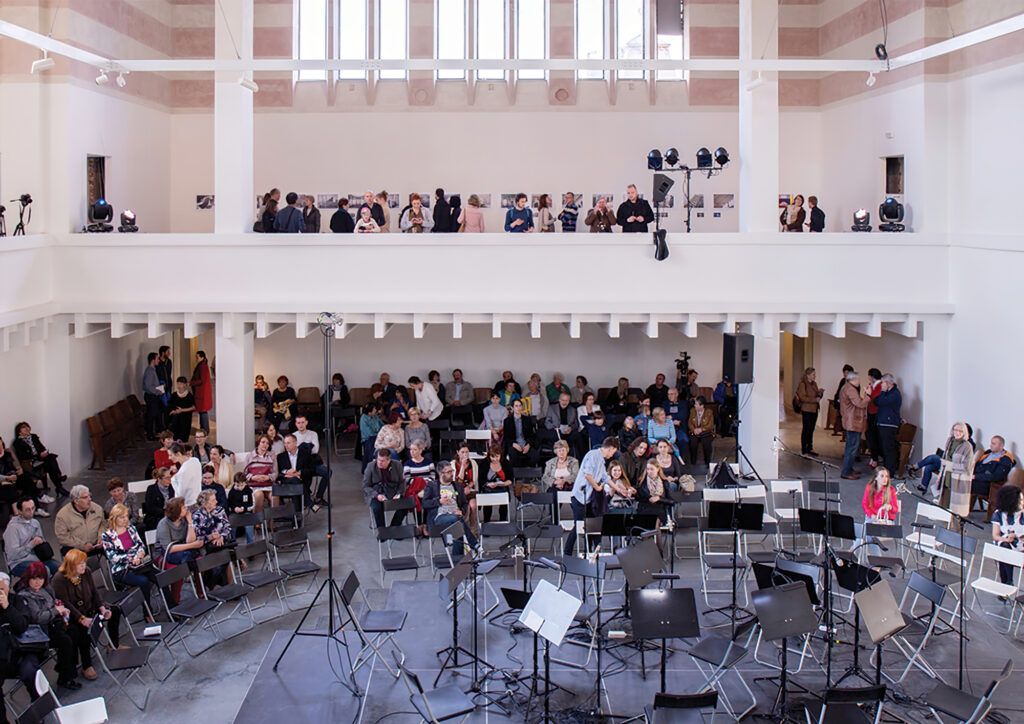
The renovation wants to achieve a dialectic relationship between the exceptional heritage and its new contents. The generous central space of the building is simply divided horizontally into two chromatically different parts becoming a “half-white” gallery.
New Synagogue in Zilina, Slovakia, by PLURAL
BigMatNational Prize in Slovakia’21
Location: Žilina, Slovakia
Year completed: 2018 (Year began 2012)
Studios: PLURAL
Authors: Martin Jančok (1978 Slovakia); Michal Janák (1987 Slovakia); Eva Štrocholcová (1990 Slovakia)
Program: Culture
Total area: 1950 m2
Usable floor area: 1800 m2
Client: Truc sphérique
Client Type: mixed
In 2011 a unique public initiative was formed. Its aim was to gradually revitalize and transform the neglected neologic synagogue, designed by Peter Behrens, built in 1931, into a cultural centre. Based on volunteering, crowdfunding, private sponsorship and grant applications it became an unprecedent example of civic activism in Slovakia. The main ambition was to achieve a dialectic relationship between the exceptional heritage and its new contents.
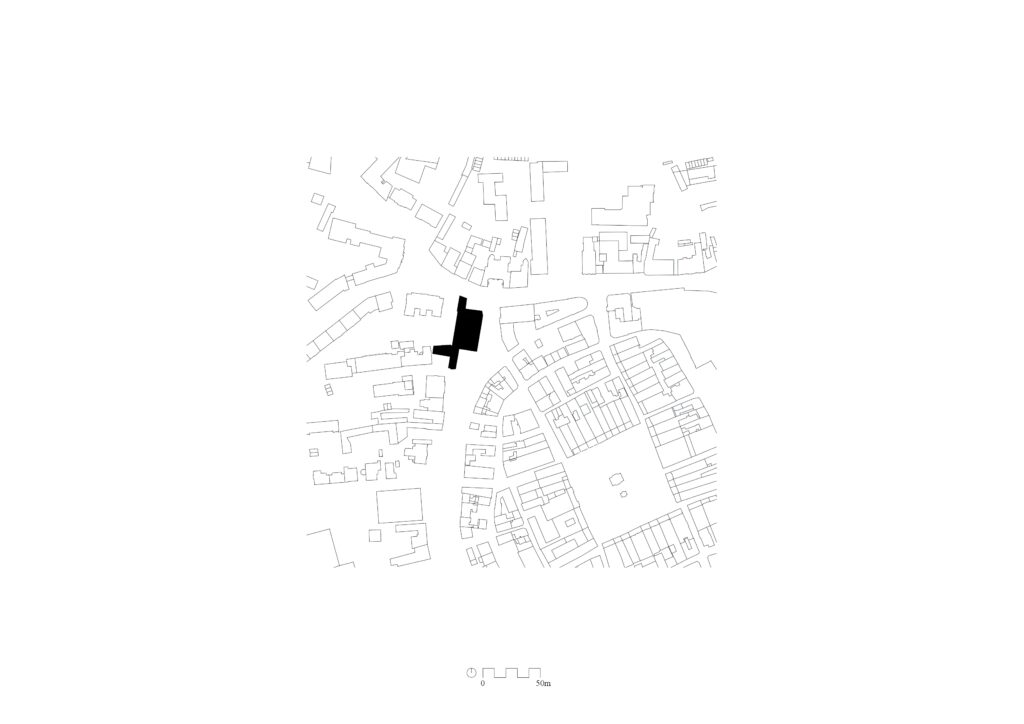
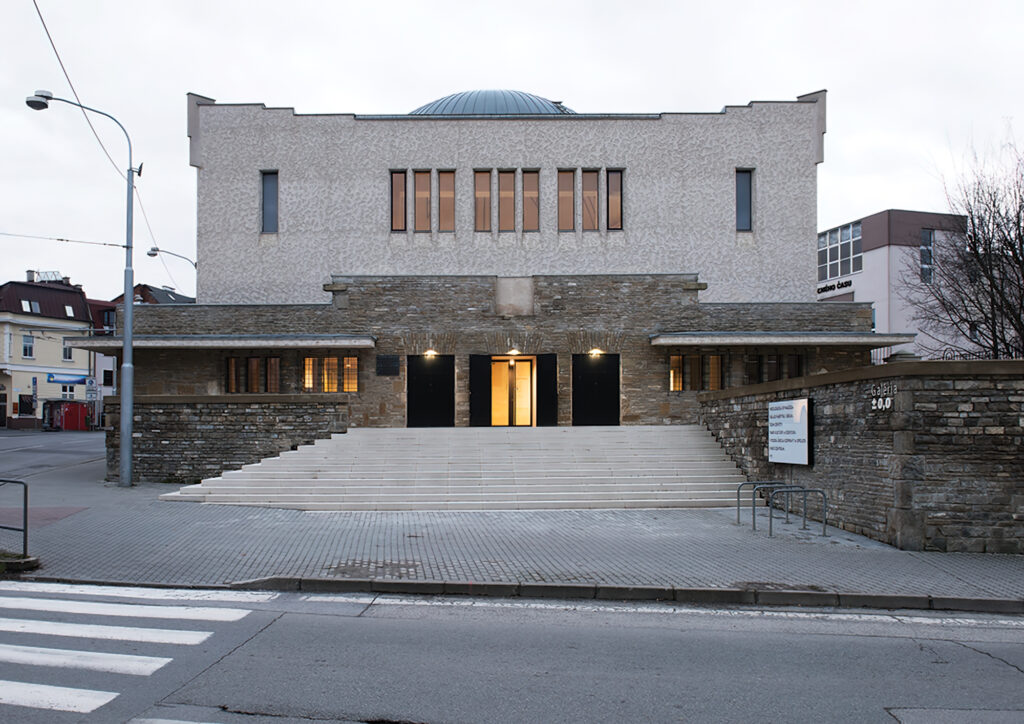
The generous central space of the building is simply divided horizontally into two chromatically different parts becoming a “half-white” gallery. The lower half provides a neutral background for new contents while the upper half presents the synagogue itself. The exhibition architecture will change seasonally, each time radically altering the exhibition space.

The neolog synagogue, designed by Peter Behrens, was built in years 1929 – 1931. Numerous later changes in the use of the synagogue have had a strong influence on the condition of the building. While the exterior of the building remained relatively preserved, the interior of the synagogue has been fundamentally altered. It is precisely the ability of absorbing all these changes without a substantial damage on the synagogue that allowed it to survive. It is what makes it so remarkable for us.
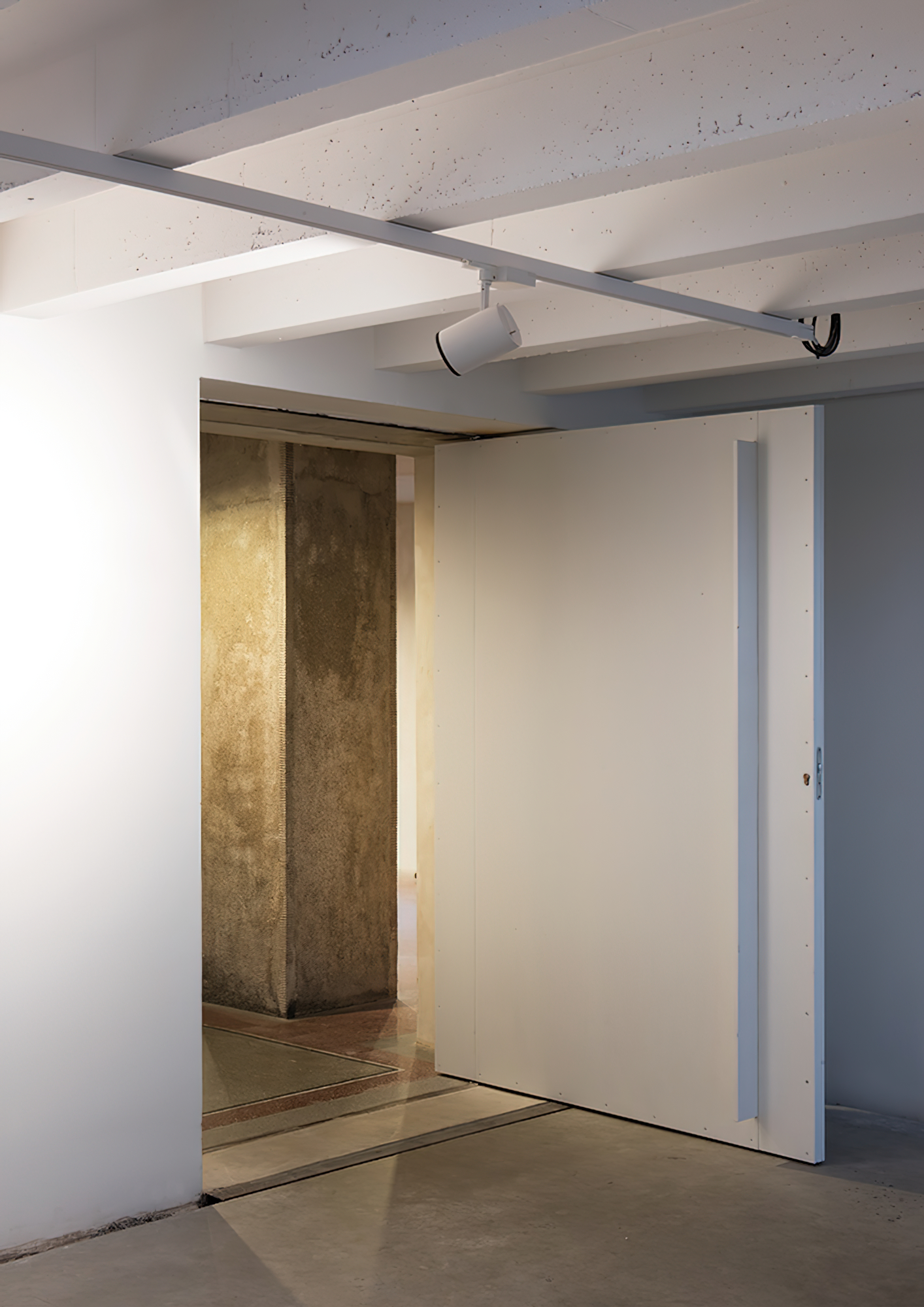

We follow the idea of a monument in constant flux by refusing to add any permanent new architectural elements to structure the space. Instead we propose a seasonal exhibition architecture to host different shows and diverse additional programmes of the new cultural institution. The generous central space of the building is simply divided horizontally into two chromatically different parts becoming a “half-white” gallery. While the lower half provides a neutral background for new contents the upper half presents the synagogue itself. The exhibition space will change constantly according to curatorial cycles, each time radically altering the exhibition space.
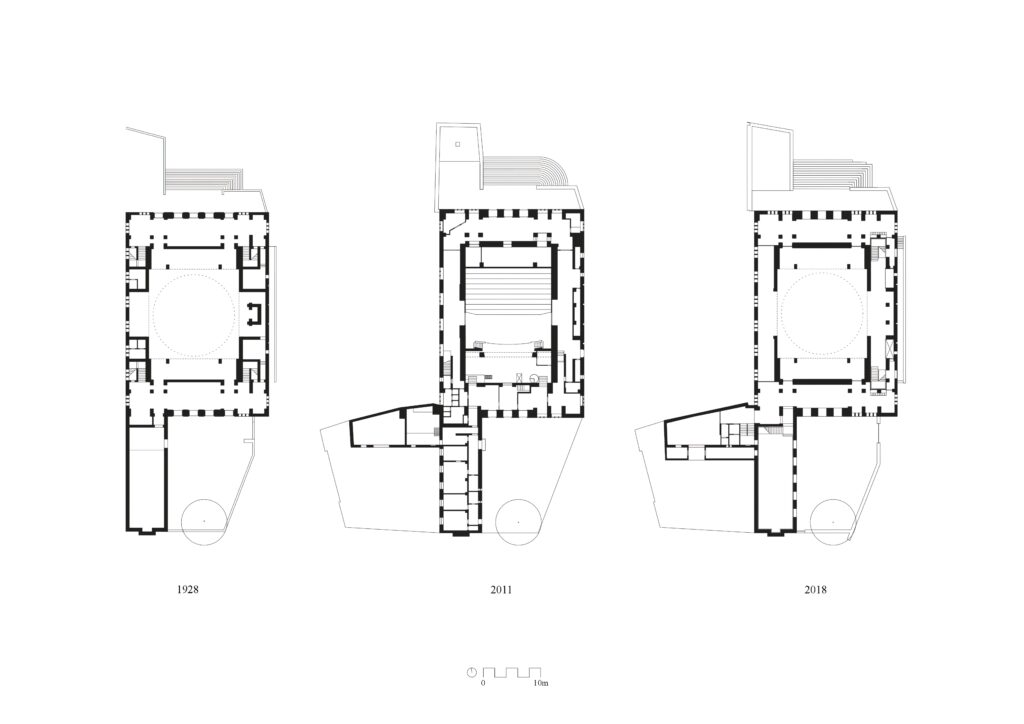
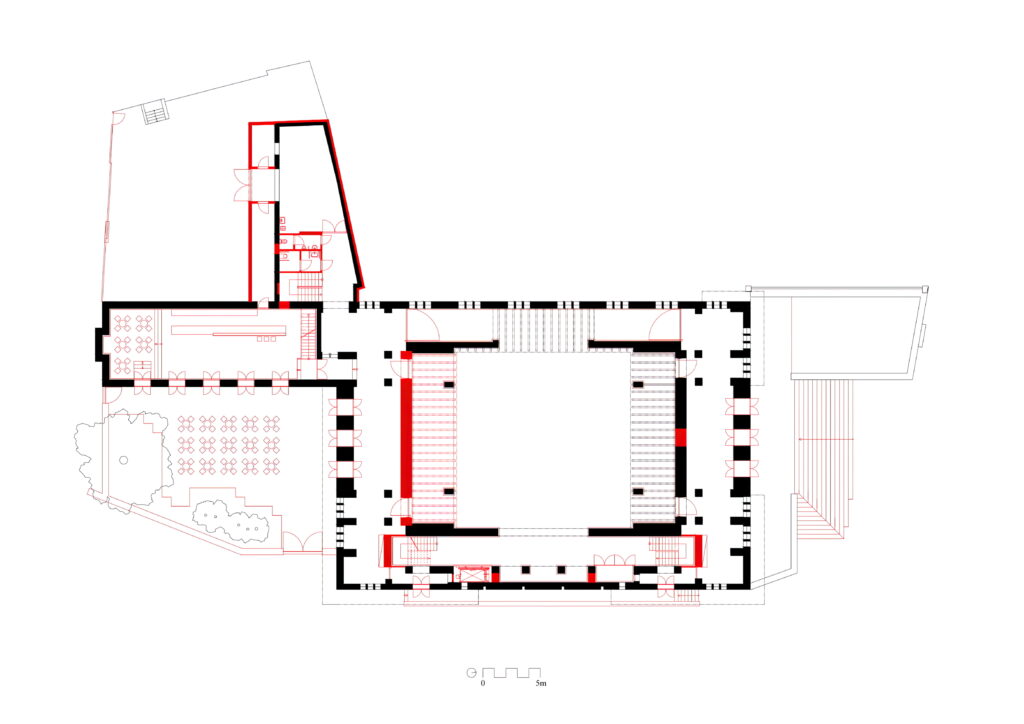

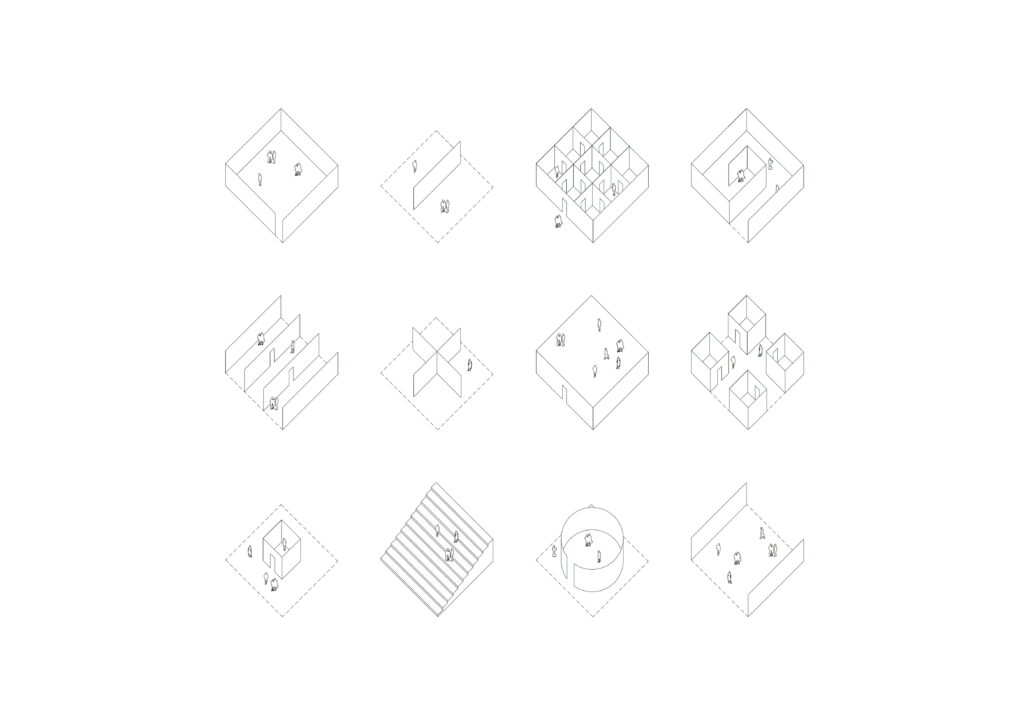

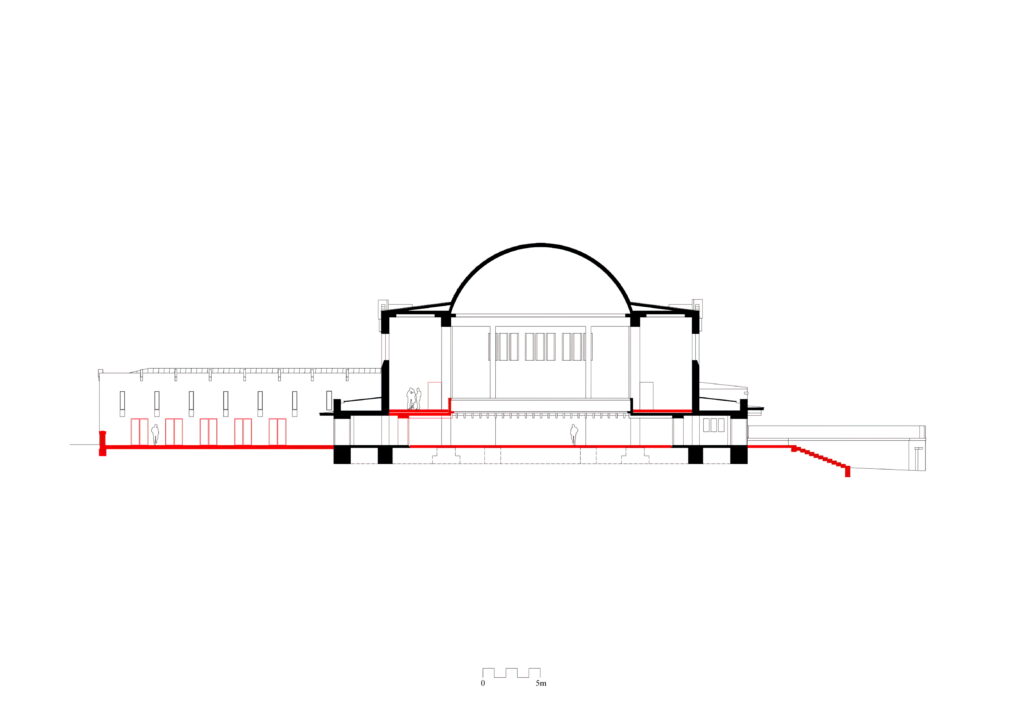
Almost all of the preserved parts of the original structure have been kept, the rest was a subject to restoration. The only visibly new structure is a concrete floor covering all of the exhibition spaces.

